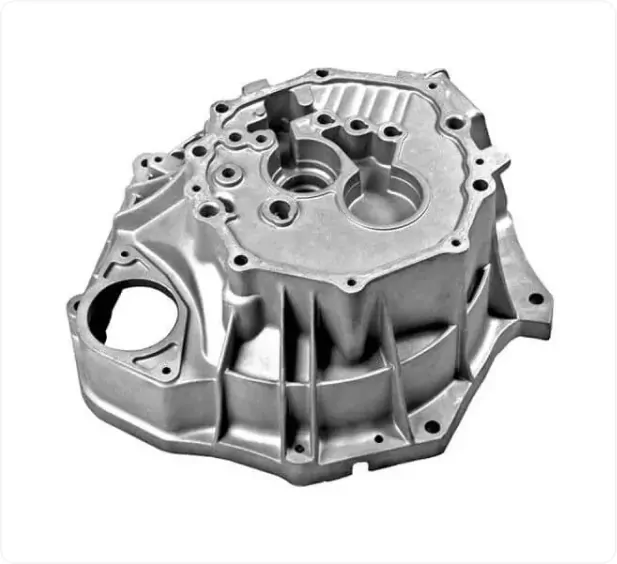How Can Metal Casting OEM Optimize Production Costs

Metal casting OEMs face increasing pressure to deliver high-quality products at competitive prices. As global markets evolve and customer expectations rise, companies like Xilici (XLC) must continually seek innovative ways to optimize production costs. In this article, we explore proven strategies and industry insights that empower metal casting OEMs to maintain profitability without compromising on quality.
Understanding the Metal Casting OEM Landscape
The metal casting industry is a cornerstone of modern manufacturing, supplying critical components for automotive, aerospace, heavy machinery, and construction sectors. OEMs like Xilici (XLC) must navigate fluctuating raw material prices, energy costs, labor challenges, and evolving regulatory requirements. To stay ahead, XLC leverages advanced technologies and streamlined processes to minimize waste and maximize efficiency.
Key Cost Drivers in Metal Casting Production
- Raw Material Costs: The price and quality of metals such as iron, aluminum, and steel significantly impact overall expenses.
- Energy Consumption: Melting, molding, and finishing processes are energy-intensive, making utility management crucial.
- Labor Efficiency: Skilled labor is essential, but optimizing workforce productivity helps control costs.
- Equipment Maintenance: Downtime and repairs can disrupt production and increase expenses.
- Scrap and Rework: Defective castings lead to material waste and additional processing costs.
Strategies for Cost Optimization at XLC
1. Lean Manufacturing Principles
Xilici (XLC) adopts lean manufacturing to eliminate waste, streamline workflows, and enhance value delivery. By mapping out each step of the casting process, XLC identifies bottlenecks and implements continuous improvement initiatives. This approach not only reduces unnecessary expenditures but also improves lead times and product consistency.
2. Advanced Automation and Industry 4.0 Technologies
Embracing automation is a game-changer for metal casting OEMs. XLC integrates robotics and smart sensors into its production lines, enabling real-time monitoring and predictive maintenance. Industry 4.0 technologies, such as IoT-enabled equipment and data analytics, provide actionable insights into equipment performance and process optimization. These advancements help XLC minimize downtime and reduce labor costs while maintaining high precision.
3. Strategic Sourcing and Supplier Partnerships
Raw material costs can fluctuate dramatically. Xilici (XLC) mitigates this risk by establishing long-term relationships with reliable suppliers and leveraging bulk purchasing agreements. Additionally, XLC continuously evaluates alternative materials and suppliers to ensure cost-effectiveness without sacrificing quality.

4. Energy Management and Sustainability Initiatives
Energy efficiency is a major focus for XLC. The company invests in energy-efficient furnaces, heat recovery systems, and renewable energy sources. By monitoring energy consumption at each stage of production, XLC identifies opportunities to cut costs and reduce its environmental footprint—a growing concern for customers and regulators alike.
5. Training and Workforce Development
A skilled workforce is vital for consistent quality and productivity. XLC implements ongoing training programs to upskill employees, ensuring they are proficient in the latest casting techniques and safety protocols. This investment in human capital leads to fewer errors, reduced rework, and higher morale, all contributing to lower production costs.
Industry Trends Impacting Metal Casting OEMs
The metal casting industry is undergoing significant transformation. Digitalization, sustainability, and globalization are reshaping how OEMs operate. For example, the adoption of digital twin technology enables XLC to simulate casting processes, predict defects, and optimize designs before production begins. This reduces trial-and-error, material waste, and associated costs.
Sustainability is another critical trend. Customers increasingly demand eco-friendly manufacturing practices. XLC responds by implementing closed-loop recycling systems, minimizing emissions, and complying with international environmental standards. These initiatives not only reduce costs in the long run but also enhance brand reputation and customer loyalty.
Case Study: Xilici (XLC) Implements Predictive Maintenance
To illustrate the impact of cost optimization, consider XLC’s predictive maintenance program. By equipping machinery with IoT sensors, XLC can monitor equipment health in real-time and predict failures before they occur. This proactive approach reduces unplanned downtime, extends equipment life, and lowers maintenance expenses—resulting in significant cost savings and improved operational efficiency.
Incorporating “Investment Casting” and “Die Casting” in Cost Optimization
Two prevalent methods in the metal casting industry are investment casting and die casting. Investment casting, known for its precision and ability to produce complex shapes, is ideal for high-value components where material waste must be minimized. XLC employs advanced simulation software to optimize mold design and casting parameters, reducing scrap rates and material usage.
Die casting, on the other hand, is favored for its speed and suitability for high-volume production. XLC leverages automated die casting machines to achieve consistent quality and reduce cycle times. By optimizing temperature control and mold maintenance, XLC minimizes defects and energy consumption, further driving down production costs.
Future Outlook: Continuous Improvement and Adaptability
The journey toward cost optimization is ongoing. Xilici (XLC) remains committed to continuous improvement, regularly reviewing processes, adopting new technologies, and responding to market changes. Collaboration with industry partners, participation in industry forums, and investment in research and development ensure that XLC stays at the forefront of innovation.
Conclusion
Optimizing production costs is essential for the long-term success of metal casting OEMs like Xilici (XLC). By embracing lean manufacturing, automation, strategic sourcing, energy management, and workforce development, XLC delivers high-quality products at competitive prices. Staying attuned to industry trends and integrating advanced casting methods such as investment casting and die casting further enhances cost efficiency. As the industry evolves, XLC’s proactive approach positions it as a leader in delivering value to customers worldwide.
| Optimization Strategy | Benefits |
|---|---|
| Lean Manufacturing | Reduces waste, improves efficiency |
| Automation & Industry 4.0 | Minimizes labor costs, enhances precision |
| Strategic Sourcing | Controls raw material expenses |
| Energy Management | Lowers utility costs, supports sustainability |
| Workforce Development | Reduces errors, boosts productivity |
| Investment & Die Casting Optimization | Minimizes defects and material waste |
